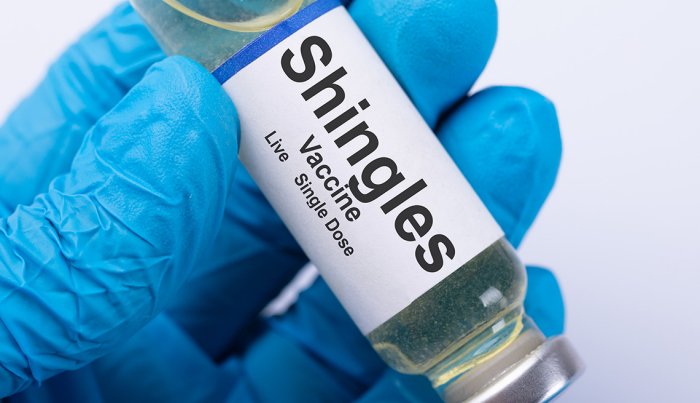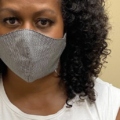Shingles is a viral infection that causes a painful rash. Although shingles can occur anywhere on your body, it most often appears as a single stripe of blisters that wraps around either the left or the right side of your torso. Shingles is caused by the varicella-zoster virus — the same virus that causes chickenpox.
Shingles vaccination is the only way to protect against shingles and postherpetic neuralgia (PHN), the most common complication from shingles. According to Mayo clinic, people looking to receive the shingles vaccine now have two options. The Food and Drug Administration in 2017 approved Shingrix. It’s the preferred alternative to Zostavax, which was approved in 2006.
Both vaccines are approved for adults aged 50 and older for the prevention of shingles and related complications, whether they’ve already had shingles or not. You may get the Shingrix vaccine even if you’ve already had shingles. Also, consider getting the Shingrix vaccine if you’ve had the Zostavax vaccine or if you don’t know whether you’ve had chickenpox.
Zostavax is a live vaccine given as a single injection, usually in the upper arm. Shingrix is a nonliving vaccine made of a virus component. It’s given in two doses, with two to six months between doses. The most common side effects of either shingles vaccine are redness, pain, tenderness, swelling and itching at the injection site, and headaches. Some people report a chickenpox-like rash after getting the shingles vaccine.
Shingles Vaccination Side Effects Pros And Cons
A study comparing the two shingles vaccine showed that Shingrix was 85% more effective in reducing cases of shingles than Zostavax but it carries a 30% increase in vaccine related side-effects. Shingrix side-effects can be severe and may be exacerbated if the vaccine is not given properly. If the injection is not in the muscle and ends up just under the skin, significant local reaction can occur. In the original studies with Shingrix, 85% of the people receiving the vaccine reported local or systemic reactions such as pain, swelling & redness at site of injection, fatigue, headaches, etc. and 17% reported more serious reactions preventing them from normal activities. Optic neuropathy and gout were also reported.
Should you get the vaccine?
Healthy adults 50 years and older should get two doses of Shingrix, separated by 2 to 6 months. You should get Shingrix even if in the past you:
- had shingles
- received Zostavax*
- are not sure if you had chickenpox
There is no maximum age for getting Shingrix.
If you had shingles in the past, you can get Shingrix to help prevent future occurrences of the disease. There is no specific length of time that you need to wait after having shingles before you can receive Shingrix, but generally you should make sure the shingles rash has gone away before getting vaccinated.
You can get Shingrix whether or not you remember having had chickenpox in the past. Studies show that more than 99% of Americans 40 years and older have had chickenpox, even if they don’t remember having the disease. Chickenpox and shingles are related because they are caused by the same virus (varicella zoster virus). After a person recovers from chickenpox, the virus stays dormant (inactive) in the body. It can reactivate years later and cause shingles.
Can shingles be treated if I don’t get the vaccine?
The current recommendations are to start antiviral therapy as soon as possible to try to prevent the post-herpetic pain. The medication may shorten the course of the shingles but doesn’t resolve it. If you have pain and abnormal sensations prior to onset of the rash, presence of >50 lesions and ophthalmic involvement, your risk of developing the post-herpetic nerve pain is higher so be sure and take the medications. Once you get the pain, there are a variety of medications that are used with varied success.
What Are the Possible Side Effects of Shingrix?
Studies show that Shingrix is safe. The vaccine helps your body create a strong defense against shingles. As a result, you are likely to have temporary side effects from getting the shots. The side effects may affect your ability to do normal daily activities for 2 to 3 days.
Most people got a sore arm with mild or moderate pain after getting Shingrix, and some also had redness and swelling where they got the shot. Some people felt tired, had muscle pain, a headache, shivering, fever, stomach pain, or nausea. About 1 out of 6 people who got Shingrix experienced side effects that prevented them from doing regular activities. Symptoms went away on their own in about 2 to 3 days. Side effects were more common in younger people.
You might have a reaction to the first or second dose of Shingrix, or both doses. If you experience side effects, you may choose to take over-the-counter pain medicine such as ibuprofen or acetaminophen.
When Should I See a Doctor Because of the Side Effects I Experience From Shingrix?
In clinical trials, Shingrix was not associated with serious adverse events. In fact, serious side effects from vaccines are extremely rare. For example, for every 1 million doses of a vaccine given, only one or two people may have a severe allergic reaction. Signs of an allergic reaction happen within minutes or hours after vaccination and include hives, swelling of the face and throat, difficulty breathing, a fast heartbeat, dizziness, or weakness. If you experience these or any other life-threatening symptoms, see a doctor right away.
Shingrix causes a strong response in your immune system, so it may produce short-term side effects more intense than you are used to from other vaccines. These side effects can be uncomfortable, but they are expected and usually go away on their own in 2 or 3 days. ALSO READ:All 10 Myths About Vaccines Debunked






